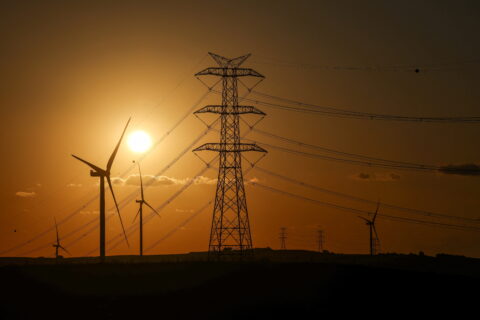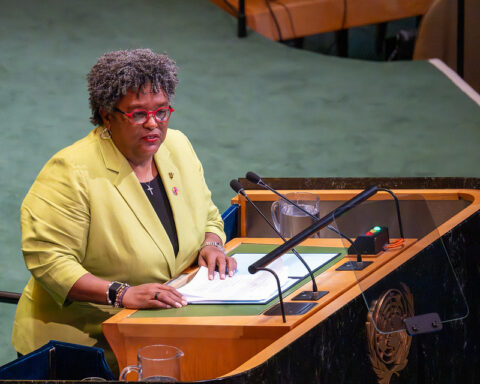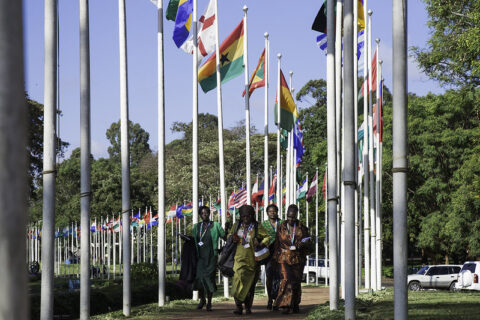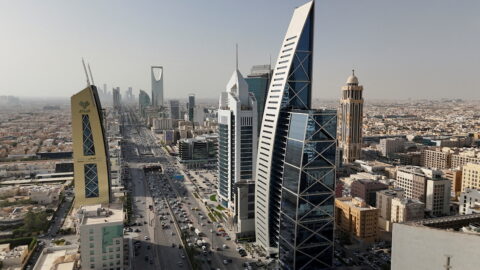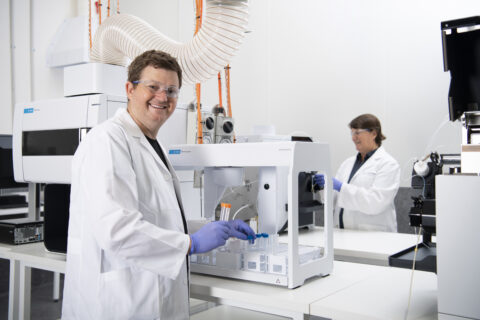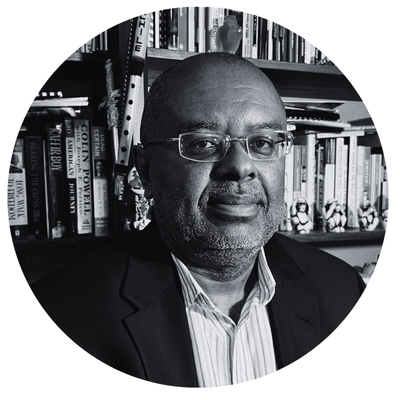When I think about climate change nowadays, I think about how the places I consider home have changed, are changing, and will continue to change.
I think about how the things I enjoy can cease to exist. As someone who immigrated to Canada from the Philippines, I call those two countries my home; both have honed me into who I am today– from the culture I grew up with to the community I belong to. Given climate change’s dire impacts, I can’t help but feel anxious about how those places are also rapidly changing. I can see it right before my eyes: from the warmer summers and more intense typhoons in the Philippines to the warmer and shorter winters in Winnipeg, it feels odd and frightening to experience those changes instantly.
I grew up in the Philippines and as a child, my parents always made sure that we had food on the table and taught us to save up and be thrifty. My parents also taught me to refrain from littering anywhere and to throw away my garbage properly. However, prioritizing the environment was not at the top of the list and something as seemingly simple as recycling is not something that is emphasized. Flooding is common whenever it rains, which often means trash will flow from one place to another because even though I try to be mindful of my trash, others will leave trash in the streets. A lot of our rivers are known for water and plastic pollution. There weren’t a lot of trees and parks around in larger cities for people to enjoy. As a kid, all of these seemed expected in my environment.
When I moved to Canada in 2013 and began navigating a new environment, I realized I had to unlearn what I deemed typical back in the Philippines. One thing that stood out for me during my first year in Canada was how everywhere I went, there was a garbage and recycling bin. I only learned how to recycle properly when I moved to Canada. I thought, “If only the Philippines could have the same system, there would probably be less trash going to the rivers and streets.”
Despite this new recycling knowledge, my climate journey wouldn’t truly start until much later.
My climate journey began not too long ago. In fact, it only started in 2022 when I landed my current role at the Manitoba Museum as their Learning and Engagement Producer for Youth Climate Action. I knew what climate change and global warming were, but my understanding of those topics needed work. I remember when I interviewed at the museum, they asked me about eco-anxiety and I had no idea what that was. I knew what anxiety meant, but eco-anxiety? It was my first time hearing that term.


I was fortunate to get the job; I made sure to research, take notes, and deepen my understanding of climate change and its impacts. I didn’t have any formal education in the environment and sustainability discipline; all I had was my background in science, my strong interest in working with youth, and my determination to learn more about climate change and make an impact through my job.
My work at the museum has allowed me to gain a deeper understanding of the environment around me. I’ve learned to appreciate the many wonderful things that Mother Nature does for us. I have become more conscious of my actions and decisions that will impact the environment – in short, I have to walk the talk.
My role at the museum has also taught me the importance of climate education and having resources everyone can access.
For example, I run a group called Youth Climate Alliance at the Manitoba Museum. The program aims to give youth ages 14 – 18 a platform to pursue their climate change advocacy and to learn more about climate change and its impacts. Working with youth never fails to inspire me. I feel hopeful about the future because I can see how there are people out there who can come together and make the world a better place.
As I write this, I can’t help but reflect on how far I’ve come when it comes to my climate journey and how much more I need to learn and improve. There’s a phrase in Tagalog that goes “Malayo pa, pero malayo na” or in English, “Still a long way to go but have already gone a long way”- this is how I would summarize my climate story. There is still so much that I need to learn and unlearn about climate change and its impacts, and climate action, but I know that Mika a year and a half ago would be so proud of who she is today.

My name is Mika Pineda, and I am currently working at the Manitoba Museum as a Learning and Engagement producer for Youth Climate Action. I create and develop programming related to climate change for youth (K-12). Through the programs I develop, I hope to educate Manitoban youth about climate change and its impacts because it is such an important issue right now.
The post Malayo pa, pero malayo na (Still a long way to go, but have already gone a long way) appeared first on Climate Generation.
Malayo pa, pero malayo na (Still a long way to go, but have already gone a long way)
Climate Change
Panama environment minister backs calls for reform of UN climate process
Panama’s environment minister has joined a growing push for reform of the UN climate change negotiations, proposed by campaigners and academics in recent years – one of the first such calls by a minister directly involved in the talks.
Juan Carlos Navarro told Climate Home in a recent interview on the sidelines of Climate Week in New York that the current system for approving decisions – which requires all countries to agree by consensus – has not delivered good enough results and should instead use a majority or super-majority decision-making process.
“By consensus, you cannot get 186 nations to agree on anything. It’s a miracle we have come so far,” said Navarro. “We need to change the rules so we have a basic, rational, majority or super-majority decision-making process where we can do things better and faster.”
The comments follow pressure from civil society and academics to reform the UN climate process. In June, more than 200 campaign groups issued a joint call to reform the decision-making process, which they argued can be blocked by oil and gas-producing countries and has reached a “breaking point”.
Andreas Sieber, policy director with climate advocacy group 350.org, said he was sympathetic to Panama’s proposal, but added “it would just be part of a puzzle” to make the UN climate talks work more efficiently.
He added that it could be hard to get over the line as earlier efforts to secure a rule on voting as a last resort had met with fierce opposition from oil-producing countries – and decisions reached by consensus have the weight of having all the countries behind them, he noted.
Erika Lennon, Senior Attorney at the Center for International Environmental Law, celebrated that more people are talking about potential changes to the UNFCCC, as “being totally beholden to consensus-based decision making is not leading to the outcomes that we need”.
She also agreed that voting is just part of the solution, and suggested possible reforms could include increased transparency in the negotiation rooms, inclusion of civil society and indigenous groups, and a conflict of interest rule that blocks fossil fuel companies from participating.
During last year’s COP29 in Baku, a group of experts known as the Club of Rome – among them the former UN climate chief Christiana Figueres and former UN Secretary-General Ban Ki Moon – issued an open letter proposing ways to modernise the climate process.
The current structure of COPs “simply cannot deliver the change at exponential speed and scale, which is essential to ensure a safe climate landing for humanity”, the letter said. They argued instead for “smaller, more frequent, solution-driven meetings” where countries can discuss progress and be held accountable.
At that same COP in Azerbaijan, Saudi Arabia managed to block all mentions of fossil fuels in text summarising discussions on cutting greenhouse gas emissions. It was able to do this despite all countries having agreed to transition away from fossil fuels in energy systems just one year earlier at COP28.
UN Climate Change consults on COP process
In a speech at Climate Week in New York, Simon Stiell, the executive secretary of UN Climate Change, noted that recent COPs have delivered “concrete results and global steps forward”, adding that cooperation under the process has lowered expected global warming from 5C to closer to 3C.
But, he conceded, it is “imperfect”. “As this new era of implementation gathers pace, we must also keep evolving, and striving towards faster, fully-inclusive, higher-quality decisions that tie the formal process ever-closer to real economies and real lives,” he said.
Senior experts have been asked to examine how the UN climate process could be improved and will deliver their ideas to Stiell later this year. The secretariat will consult with countries on any potential reforms it wants to pursue in 2026, the UN’s climate chief added.
Brazil, the host country of this year’s COP, has put the focus on global mobilisation to implement in practice what governments signed up to in the 2015 Paris Agreement. Last year it proposed setting up a UN Climate Change Council in order to support that work, but this proposal does not seem to have gained much traction amid geopolitical tensions and Trump’s attacks on multilateral climate action.

Downsizing COPs?
Panama’s Navarro added that the UN climate summit has grown too big, making its scope “ridiculous”. In 2023, over 83,000 people attended COP28 in Dubai, while COP29 in Baku saw fewer, with 66,778 registered participants.
Navarro said the COP meetings had become an anachronism. “You have thousands and thousands of people who are living off the story,” he said. “They’re living off these meetings, just sitting around the world on expense accounts, creating a bigger carbon footprint for the planet, and we’re not achieving anything.”
In April 2024, UNFCCC head Stiell said personally he “would certainly like to see future COPs reduce in size”, telling an audience at London’s Chatham House think-tank that “bigger doesn’t necessarily mean better”.
This year, COP30 will be held in the Amazon city of Belem, which poses “self-evident” financial and logistical limitations, according to Navarro, who praised Brazil for being open to hearing the complaints from the Global South countries on this topic.
After many delegations complained over the high costs of accommodation and difficult access, Brazil offered cruise-ship rooms and price caps, and the UN has increased the daily subsidy for diplomats from most developing nations to attend the summit.
Landmark ICJ climate ruling must be turned into concrete action on shipping
‘Less hypocrisy, more concrete results’
“Having said that, and coming back to the point of what COPs have become, I wish that COPs were less bullshit, more concrete results,” Navarro told Climate Home.
His own country – which is judged to be carbon-negative, thanks to its extensive carbon-storing forests – recently published its “Nature Pledge”, combining climate, biodiversity and conservation pledges. Those include restoring 100,000 hectares of ecosystems such as degraded mangroves by 2035, maintaining 30% of Panama’s land and seas under protection and absorbing 5 million tons of CO₂.
Practical measures to achieve that include new equipment for park rangers, more radars to monitor and catch illegal fishing, and fines for polluting industries.
Panama has also set up a Nature Fund, which aims to collect $150 million-$200 million for conservation projects using resources like blue carbon bonds, debt-for-nature swaps and a national carbon market backed by blockchain with revenues going to the public sector to ensure “transparency and accountability”.
Without specifying which, Navarro called out “countries that do an incredible job of greenwashing, talking about conservation and talking about the environment – and they’re either oil producers or plastics producers, or kill whales or are destroying our fisheries, or keep building coal power plants or keep polluting”.
“We’ve run out of time for all of these hypocritical individuals, corporations – or even nations,” he added.
The post Panama environment minister backs calls for reform of UN climate process appeared first on Climate Home News.
Panama environment minister backs calls for reform of UN climate process
Climate Change
AI and satellite data help researchers map world’s transition minerals rush
Researchers are using satellite images and AI-powered modelling to map global mining activity, seeking to plug gaps in existing data as the rush for “transition minerals” fuels concerns about the industry’s impact on the environment and local communities.
Countries are scrambling to shore up supplies of metals vital for the transition to renewables, such as lithium used in electric vehicle (EV) batteries, and copper – used in solar panels and wind turbines, many of which are produced in environmentally sensitive areas.
“New mines will likely be in areas of high biodiversity, or where water and Indigenous rights are at stake,” project lead Victor Maus from the Vienna University of Economics and Business told Climate Home News.
More than half of energy transition mineral resources are located on or near the lands of Indigenous peoples and subsistence farmers, according to a 2022 study published in the Nature journal.
“Monitoring those impacts is critical,” said Maus, whose team members have identified massive gaps in current data when it comes to what, how and even where minerals are being extracted around the world.
During a previous project, they compared global satellite imagery of 120,000 square kilometres of visible mine footprints with the S&P Capital IQ Pro database of mining production. The results were stark. More than half of the mining areas identified from space had no corresponding production data in the official record.
To address these gaps, Maus and his team are building a mining database using satellite images. The project, which is part of the European Union-funded Mine the Gap initiative, will be a vital tool for policymakers and help foster transparency in the mining industry, he added.
“We’re hoping to create not only a research tool but also a means of validating and complementing what companies report, supporting greater transparency across the sector.”
Mapping environmental impact
As well as counting mines and assessing overall production, the database will give a clearer picture about where the biggest environmental and social risks lie by tracking land use around mines, waste generation and signs of environmental degradation.
“Simply knowing how much is being produced isn’t a direct measurement of impact,” said Tim Werner, a senior lecturer at The University of Melbourne who has worked with Maus on previous research into critical minerals.
“We simply don’t have all the information we need to scientifically prove where impacts for one area are worse than others. This is a big problem for strategic environmental management at national and global scales,” he added, describing the data gaps as “mind-boggling”.
A range of satellites are being used to collect the required information, including multispectral imagery, radar and hyperspectral sensors, collected from sources including the EU’s Sentinel constellation and German DLR satellites, chosen for their global coverage and accuracy.
AI will then be used to scan these images, learning how to identify and track potential issues as the project develops.
The challenges of collecting mining data
There have been previous attempts to map the overlap between energy transition mineral mines and key biodiversity hotspots in different mineral-rich countries, as well as industry efforts to plug the gaps in data about global mining production.
But past efforts to map global mining more accurately have struggled to document small-scale and artisanal mining operations, which are often unregulated despite their significant social and environmental impacts.
In September, the International Council on Mining and Metals (ICMM) launched its global mining database – reportedly the most comprehensive mining resource to date, with information about more than 15,000 active facilities in 151 countries, but it does not include informal mining sites.
“We had to draw some scope boundaries,” said Emma Gagen, the ICMM’s data and research director. “The industry is huge and that’s been the challenge this whole time – people haven’t tried to collect this data before because it’s so vast.”
The case for clearer global standards
Despite such data initiatives, which reflect growing pressure on the industry to clean up its act, researchers say structural and legislative changes will be needed to reduce the harms caused by mining.
Gagen said more uniform regulatory standards would “drive performance improvements across the industry.”
“What’s most needed is alignment,” Maus said. “Clearer global standards on what should be measured and reported, and policies that encourage disclosure of mining data.”
For Maus and his team, having an accurate picture is a crucial first step.
“If we don’t even know how many materials are being produced, we’ve got very little basis to even understand the scale of possible impacts in an area,” Werner said.
Main image: Satellite image showing the expansion of nickel mining in Sulawesi, Indonesia (Photo: Sentinel-2 cloudless by EOX IT Services GmbH, which contains modified Copernicus Sentinel data 2024)
The post AI and satellite data help researchers map world’s transition minerals rush appeared first on Climate Home News.
AI and satellite data help researchers map world’s transition minerals rush
Climate Change
Experts: The key ‘unknowns’ of overshooting the 1.5C global-warming limit
Last week, around 180 scientists, researchers and legal experts gathered in Laxenburg, Austria to attend the first-ever international conference focused on the controversial topic of climate “overshoot”.
This hypothesised scenario would see global temperatures initially “overshoot” the Paris Agreement’s aspirational limit of 1.5C, before they are brought back down through techniques that would remove carbon dioxide from the atmosphere.
(For more on the key talking points, new research and discussions that emerged from the three-day conference, see Carbon Brief’s full write-up of the event.)
On the sidelines of the conference, Carbon Brief asked a range of delegates what they consider to be the key “unknowns” around overshoot.
Below are their responses, first as sample quotes, then, in full:
- Dr James Fletcher: “Yes, there will be overshoot, but at what point will that overshoot peak? Are we peaking at 1.6C, 1.7C, 2.1C?”
- Prof Shobha Maharaj: “There are lots of places in the world where adaptation plans have been made to a 1.5C ceiling. The fact is that these plans are going to need to be modified or probably redeveloped.”
- Sir Prof Jim Skea: “There are huge knowledge gaps around overshoot and carbon dioxide removal.”
- Prof Kristie Ebi: “If there is going to be a peak – and, of course, we don’t know what that peak is – then how do you start planning?”
- Prof Lavanya Rajamani: “To me, a key governance unknown is the extent to which our current legal and regulatory architecture…will actually be responsive to the needs of an overshoot world.”
- Prof Nebojsa Nakicenovic: “One of my major concerns has been for a long time…is whether, even after reaching net-zero, negative emissions can actually produce a temperature decline.”
- Prof Debra Roberts: “For me, the big unknown is how all of these areas of increased impact and risk actually intersect with one another and what that means in the real world.”
- Prof Oliver Geden: “[A key unknown] is whether countries are really willing to commit to net-negative trajectories.”
- Dr Carl-Friedrich Schleussner: “This is a bigger concern that I have – that we are pushing the habitability in our societies on this planet above that limit and towards maybe existential limits.”
- Dr Anna Pirani: “I think that tracking global mean surface temperature on an overshoot pathway will be an important unknown.”
- Prof Richard Betts: “One of the key unknowns is are we going to continue to get the land carbon sink that the models produce.”
- Prof Hannah Daly: “The biggest unknown is whether countries can translate these global [overshoot] pathways into sustained domestic action…that is politically and socially feasible.”
- Dr Andrew King: “[W]e still have a lot of uncertainty around other elements in the climate system that relate more to what people actually live through.”
Former minister for public service, sustainable development, energy, science and technology for Saint Lucia and negotiator at COP21 in Paris.
The key unknown is where we’re going to land. At what point will we peak [temperatures] before we start going down, and how long will we stay in that overshoot period? That is a scary thing. Yes, there will be overshoot, but at what point will that overshoot peak? Are we peaking at 1.6C, 1.7C, 2.1C? All of these are scary scenarios for small island developing states – anything above 1.5C is scary. Every fraction of a degree matters to us. Where we peak is very important and how long we stay in this overshoot period is equally important. That’s when you start getting into very serious, irreversible impacts and tipping points.
Adjunct professor at the University of Fiji and a coordinating lead author for Working Group II of the IPCC’s seventh assessment
First of all, there is an assumption that we’re going to go back down from overshoot. Back down is not a given. And secondly, we are still in the phase where we are talking about uncertainty. Climate scientists don’t like uncertainty. We are not acknowledging that uncertainty is the new normal… But because we’re so bogged down in terms of uncertainties, we are not moving towards [the issue of] what we do about it. We know it’s coming. We know the temperatures are going to be high. But there is little talk about the action.
The focus seems to be more on how we can understand this or how we can model this, but not what we do on the ground. Especially when it comes to adaptation planning – [and around] how does this modify whatever the plans are? There are lots of places in the world where adaptation plans have been made to a 1.5C ceiling. The fact is that these plans are going to need to be modified or probably redeveloped. And no one is talking about this, especially in the areas that are least resourced in the world – which sets up a big, big problem.
Chair of the Intergovernmental Panel on Climate Change (IPCC) and emeritus professor at Imperial College London’s Centre for Environmental Policy
There are huge knowledge gaps around overshoot and carbon dioxide removal. As it’s very clear from the themes of this conference, we don’t altogether understand how the Earth would react in taking carbon dioxide out of the atmosphere. We don’t understand the nature of the irreversibilities and we don’t understand the effectiveness of CDR techniques, which might themselves be influenced by the level of global warming, plus all the equity and sustainability issues surrounding using CDR techniques.
Professor of global health at the University of Washington‘s Center for Health and the Global Environment
There are all kinds of questions about adaptation and how to approach effective adaptation. At the moment, adaptation is primarily assuming a continual increase in global mean surface temperature. If there is going to be a peak – and of course, we don’t know what that peak is – then how do you start planning? Do you change your planning? There are places, for instance when thinking about hard infrastructure, [where overshoot] may result in a change in your plan – because as you come down the backside, maybe the need would be less. For example, when building a bridge taller. And when implementing early warning systems, how do you take into account that there will be a peak and ultimately a decline? There is almost no work in that. I would say that’s one of the critical unknowns.
Professor of international environmental law at the University of Oxford
I think there are several scientific unknowns, but I would like to focus on the governance unknowns with respect to overshoot. To me, a key governance unknown is the extent to which our current legal and regulatory architecture – across levels of governance, so domestic, regional and international – will actually be responsive to the needs of an overshoot world and the consequences of actually not having regulatory and governance architectures in place to address overshoot.
Distinguished emeritus research scholar at the International Institute for Applied Systems Analysis and executive director of The World In 2050.
One of my major concerns has been for a long time – as it was clear that we are heading for an overshoot, as we are not reducing the emissions in time – is whether, even after reaching net-zero, negative emissions can actually produce a temperature decline…In other words, there might be asymmetry on the way down [in the global-temperature response to carbon removal] – it might not be symmetrical to the way up [as temperature rise in response to carbon emissions]. And this is really my major concern, that we are planning measures that are so uncertain that we don’t know whether they will reach the goal.
The last point I want to make is that I think that the scientific community should, under all conditions, make sure that the highest priority is on mitigation.
Honorary professor at the University of KwaZulu-Natal, coordinating lead author on the IPCC’s forthcoming special report on climate change and cities, board chair of the Red Cross Red Crescent Climate Centre and co-chair of Working Group II for the IPCC’s sixth assessment
Well, I think coming from the policy and practitioner community, what I’m hearing a lot about are the potential impacts that come from the exceedance component of overshoot. What I’m not hearing a lot about is the responses to overshoot and their impacts – and how those impacts might interact with the impacts from temperature exceedance. So there’s quite a complex risk landscape emerging. It’s three dimensional in many ways, but we’re only talking about one dimension and, for policymakers, we need to understand that three dimensional element in order to understand what options remain on the table. For me, the big unknown is how all of these areas of increased impact and risk actually intersect with one another and what that means in the real world.
Senior fellow and head of the climate policy and politics research cluster at the German Institute for International and Security Affairs and vice-chair of IPCC Working Group III
[A key unknown] is whether countries are really willing to commit to net-negative trajectories. We are assuming, in science, global pathways going net negative, with hardly any country saying they want to go there. So maybe it is just an academic thought experiment. So we don’t know yet if [overshoot] is even relevant. It is relevant in the sense that if we do, [the] 1.5C [target] stays on the table. But I think the next phase needs to be that countries – or the UNFCCC as a whole – needs to decide what they want to do.
Research group leader and senior research scholar at the International Institute for Applied Systems Analysis
I’m convinced that there’s an upper limit of overshoot that we can afford – and it might be not far outside the Paris range [1.5C-2C] – before human societies will be overwhelmed with the task of bringing temperatures back down again. This [societal limit] is lower than the geophysical limits or the CDR limit.
The impacts of climate change and the challenges that will come with it will undermine society’s abilities to cooperatively engage in what is required to achieve long-term temperature reversal. This is a bigger concern that I have – that we are pushing the habitability in our societies on this planet above that limit and towards maybe existential limits. We may not be able to walk back from it, even if we wanted to. That is a big unknown to me.
I’m convinced that there is an upper limit to how much overshoot we can afford, and it might be just about 2C or a bit above – it might not be much more than that. But we do not have good evidence for this. But I think these scenarios of going to 3C and then assuming we can go back down – I have doubts that future societies grappling with the impacts of climate change will be in the position to embark on such an endeavour.
Senior research associate at the Euro-Mediterranean Center on Climate Change (CMCC) and former head of the Technical Support Unit for Working Group I of the IPCC
I think that tracking global mean surface temperature on an overshoot pathway will be an important unknown – how to take account of natural variability in that context, to inform where we are on an overshoot pathway and how well we’re doing on it. I think, methodologically, that would prove to be a challenge. The fact that it occurs over many, many years – many decades – and, yet, we sort of think about it as a nice curve. We see these graphs that say “by the 2050s, we will be here and we’ll start declining and so on”. I think that what that actually translates to in the evolution of global surface temperatures is going to be very difficult to measure and track. Even how we report on that, internationally, in the UNFCCC [UN Framework Convention on Climate Change] context and what the WMO [World Meteorological Organization] does in terms of reporting an overshoot trajectory, that would be quite a challenge.
Head of climate impacts research in the Met Office Hadley Centre and professor at the University of Exeter
One of the key unknowns is are we going to continue to get the land carbon sink that the models produce. We have got model simulations of returning from an overshoot.
If you are lowering temperatures, you have got to reduce emissions. The amount you reduce emissions depends on how much carbon is taken up naturally by the system – by forests, oceans and so on. The models will do this; they give you an answer. But we don’t know whether they are doing the right thing. They have never been tested in this kind of situation.
In my field of expertise, one of the key [unknowns] is how these carbon sinks are going to behave in the future. That is why we are trying to get real-world data into the models – including through the Amazon FACE project – so we can really try and narrow the uncertainties in future carbon sinks. If the carbon sinks are weaker than the models think, it is going to be even harder to reduce emissions and we will need to remove even more by carbon capture and removal.
Professor of sustainable energy at University College Cork
We know ever more about the profound – and often irreversible – damages that will be felt as we overshoot 1.5C. Yet we seem no closer to understanding what will unlock the urgent decarbonisation that remains our only way to avoid the worst impacts of climate change.
Global models can show, on paper, what returning temperatures to safer levels after overshoot might look like. The biggest unknown is whether countries can translate these global pathways into sustained domestic action – over decades and without precedent in history – that is politically and socially feasible.
Associate professor in climate science at the University of Melbourne
I think, firstly, can we actually achieve net-negative emissions to bring temperatures down past a peak? It’s a completely different world and, unfortunately, it’s likely to be challenging and we’re setting ourselves up to need to do it more. So I think that’s a huge unknown.
But then, beyond that, I think also, whilst we’ve built some understanding of how global temperature would respond to net-zero or net-negative emissions, we still have a lot of uncertainty around other elements in the climate system that relate more to what people actually live through. In our warming world, we’ve seen that global warming relates to local warming being experienced by everyone at different amounts. But, in an overshoot climate, we would see quite diverse changes for different people, different areas of the world, experiencing very different changes in our local climates. And also definitely worsening of some climate hazards and possibly reversibility in others, so a very different risk landscape as well, emerging post net-zero – and I think we still don’t know very much about that as well.
The post Experts: The key ‘unknowns’ of overshooting the 1.5C global-warming limit appeared first on Carbon Brief.
Experts: The key ‘unknowns’ of overshooting the 1.5C global-warming limit
-
Climate Change2 years ago
Spanish-language misinformation on renewable energy spreads online, report shows
-
Climate Change2 months ago
Guest post: Why China is still building new coal – and when it might stop
-
Climate Change Videos2 years ago
The toxic gas flares fuelling Nigeria’s climate change – BBC News
-

 Greenhouse Gases1 year ago
Greenhouse Gases1 year ago嘉宾来稿:满足中国增长的用电需求 光伏加储能“比新建煤电更实惠”
-

 Climate Change1 year ago
Climate Change1 year ago嘉宾来稿:满足中国增长的用电需求 光伏加储能“比新建煤电更实惠”
-
Greenhouse Gases2 months ago
Guest post: Why China is still building new coal – and when it might stop
-

 Carbon Footprint2 years ago
Carbon Footprint2 years agoUS SEC’s Climate Disclosure Rules Spur Renewed Interest in Carbon Credits
-
Renewable Energy3 months ago
US Grid Strain, Possible Allete Sale

